- Home
- Paul Christopher
Valley of the Templars ts-7 Page 13
Valley of the Templars ts-7 Read online
Page 13
Turturro waited. The smoke began to dissipate in the wind as the last echoes from the LAWS rockets faded away against the hills. The gas tank on the minibus exploded briefly, bucking the back end of the vehicle into the air. All four tires were burning furiously and Turturro began to smell the raw stink of the melting rubber.
He pressed his finger to his earbud. “Go,” he said. From behind him a dozen men in camo gear with an M-4 carbine in one hand and a cane-cutting machete in the other rose out of the jungle and headed down the hillside to the clearing. Each man had a brown jute sack tucked into his belt.
Turturro stood and followed them, taking a can of red Krylon spray paint from the satchel hanging from his belt. Veccione and Cavan stayed behind, their jobs done. Turturro touched the switch on his earbud and spoke into his throat microphone again. “Get me hands and heads, gentlemen, as many as you can. Remember, we are the wrath and hammer of God come down on Fidel and his devil boys today. Let’s scare the shit out of these bastards!”
Turturro reached the bottom of the hill and crossed the parking lot to the side wall of the barracks. The smell of hot metal and burning rubber fumed like a choking pall. He shook the can of Krylon to mix the paint, then quickly drew a circle with a large Z. Beneath the design he spray-painted the slogan:
VIVA ORLANDO ZAPATA!
Orlando Zapata Tamayo being a martyr who died in a Cuban jail after an eighty-five-day hunger strike and whose ashes were now buried beside the veterans of the Bay of Pigs invasion of 1961. Turturro smiled as he put the dot beneath the exclamation mark. Nothing like having a dead man to lead your insurrection. That was the problem with people like Adolf, Fidel or Stalin—eventually all their warts began to show; a martyr stayed dead and pure forever. He looked at his watch. Seven minutes. He switched on his throat mike again.
“Okay, people, time to make like old soldiers and fade away. Somebody’s going to get curious about all the smoke and bangs.” Turturro turned around and headed back up the hill. A few seconds later his men followed, their jute bags bouncing heavily against their hips. Nine minutes and the clearing was quiet again except for the crackling of flames as the rafters in the barracks burned. Birds began to sing in the trees again and a long, curling trail of black smoke rose into the clear blue sky of a peaceful afternoon.
16
Capitaine Julio Ortega Montez kept the ancient Air Cubana Antonov 24 cargo plane headed roughly in the direction of Mexico. The instruments were working, keeping a steady altitude of twenty-five thousand feet over the Gulf of Mexico, and the two old turboprops were spinning with no more than their usual thundering roar.
The right seat was empty, not unusual for this sort of short-hop flight; the Brotherhood liked to keep their movements and activities as private as possible. He was not flying alone, of course; as usual the man with the cases was strapped in to the bucket jump seat in the cargo hold with strict instructions not to let his precious cargo out of his sight. As well as the man with the cases, the hold held two tons of live rock lobster, five tons of pineapples and four tons of avocados, none of which any Cuban citizen would ever see, much less eat.
Knowing that, Capitaine Julio Ortega Montez reached into the breast pocket of his uniform shirt and pulled out a package of Rothman’s cigarettes, a carton of which one of his fellow pilots had picked up for him on his last Canadian flight. Smoking on any flight was strictly forbidden, but what were they going to do, fire him? There weren’t that many experienced pilots left in Cuba.
At fifty-five years of age, Julio had been flying his entire adult life. He soloed at the National Flight Academy at the age of eighteen in a Czech-made L-29 Delfín jet trainer, then worked his way up through a variety of MiGs until his body couldn’t take the g-forces anymore.
He spent some time behind a desk, but after less than six months they had him flying Air Cuba passenger flights. When he turned fifty they switched him to short-hop cargo runs to Mexico and occasionally to Venezuela. He only made fifty dollars a week when he was working, and eighty dollars a month when he was off, but that much money could go a long way in Havana these days and he augmented his government pay with a variety of black market “imports” and “exports.”
A hundred cohibas he got from a contact at Habanos for five dollars U.S., he sold wholesale to a smuggler in Mexico for ten dollars apiece. There were ways around the revolution if you were smart enough.
His father had worked in the Havana Engineering Office during the Batista years, and from the stories he’d told Julio, everything had come full circle again. Under Batista, Cuba had been oppressed under a vicious, corrupt dictator who used the police and the army to punish his enemies while he consorted with gangsters.
After a few years of idyllic solidarity in the early days under the Comandante, Cuba was now once again ruled by a dictator who used the police and the army to punish anyone he even thought was his enemy and was surrounded with corrupt officials and gangsters in uniform who spirited millions out of the country every month on flights just like this one. Fidel had promised the country a socialist paradise and had given them a thug’s cesspool instead.
Ortega laughed. What could you expect from a senile old fool who’d supported Gaddafi right up until they’d pulled the bald, sociopathic mass murderer out of a drainage ditch and filled him full of holes?
Ortega snuffed out his cigarette in a small glass jar with a screw top he kept in the cockpit for just that purpose. He laughed again. He supposed that crazy old dictators had to stick together. The pilot checked his watch; the ninety-minute flight was almost over; he could already see the green line of the mainland coming up ahead of him.
The pilot began to sing an old Mercedes Sosa song his mother had taught him—“Alfonsina Y El Mar”: “Por la blanda arena, que lame el mar, su pequeña huella, no vuelve más”—“On the soft sand that is licked by the sea, her small footprint will never return.” Sad songs for sad times. Ortega sighed and began his final approach to Cancún International Airport.
The four-seater Polish Wilga cruised at five hundred feet over the rugged, jungle-covered hills. “Are you sure about this?” Black asked, putting his hand on Montalvo Arango’s scrawny shoulder from the rear seat of the little plane.
“The caves near Aserradero is what the man said, senor,” said Arango, raising his voice over the rattling tumble of the unmuffled engine. “I only know what he tell me.” For five hundred dollars they had convinced a reluctant Arango to come with them, but only with the promise that if the Tiburon Blanco was stolen the British government would replace it. Without batting an eye, Will Black solemnly agreed.
“You know what he’s talking about?” Black said to Laframboise. “It all looks like Cambodia down there to me.”
“Sure,” said the pilot, his right hand gently tweaking the stick in front of him. “This whole area is full of sinkholes and caves.”
“Any of them particularly well known?” Carrie asked.
Laframboise laughed. “If this guy’s on the run, dearie, I doubt he’s going to hide out anywhere famous.”
“True enough,” said Carrie, “but is there anyplace local that’s got some kind of story attached to it?”
“What kind of story?” Laframboise asked.
“A ghost story maybe, a kid getting lost. Some old legend.”
“La caverna de los asesinados,” said Arango, crossing himself. “In the time of the bandito war.”
“They murdered men there?” Black said, doing the translation in his head: the cavern of the murdered ones.
“The militiamen trapped them there. The militia were only boys, fourteen, fifteen years old. Edito’s brother, Domingo, was one of them. Their leader made them throw gasoline bombs into the cave. Those who were not burned to death were killed as they tried to escape, then thrown back into the flames. No one will go there for fear of los fantasmas inquietos.”
“The restless ghosts,” said Black.
“Sí.” Arango nodded.
“Well, Domi
ngo Cabrera would certainly remember it,” said Carrie, seated beside Black. She glanced down at the rolling landscape below. “The question is, how do we find it?”
“It is sixteen miles east of Aserradero,” said Arango.
“Are you sure?” Black asked the aging man.
“Yes, I am sure,” said Arango.
“Why?” Carrie asked. “I thought you told us Domingo Cabrera didn’t tell you where they were going when they left with his brother and Holliday.”
“There was no need for him to tell me,” said Arango darkly. “I was the militia leader who ordered those young boys to burn the Batistardos out of the cave. I was the one who threw the first cóctel Molotova into the cave to show the boys how it was done.”
There was a long silence in the cabin of the little aircraft, the roaring of the engine filling the air. Finally Black leaned forward and spoke to Laframboise. “You know where he’s talking about?”
“Near enough.” The pilot nodded.
“Any place to land?”
“There’s a river but it’s too wild and narrow to put down.”
“Anywhere else?”
“I heard stories about a guy with a hunting lodge and a private airstrip in that area. He was a doctor and a friend of Batista. His name was Martinez, I think.”
“Dr. Enrique Gomez Martinez,” said Arango. “He died in la guerra de los bandidos. He got rich giving the rich women of Habana abortions they did not want their husbands to know about.”
“Can you find the airfield?” Black asked Laframboise.
“No sweat,” said the pilot. “Easy-peasy.” He laughed. “They still say easy-peasy?”
“Not that I’m aware of,” said Carrie.
“Okay. Just sit back and enjoy the view and I’ll see what I can do.”
Four hours after the Air Cubana flight piloted by Capitaine Julio Ortega Montez landed at Cancún International Airport, a silver-sided truck bearing the familiar blue-and-white starburst logo of the Meade Optical Corporation went through the Matamoros-Brownsville border crossing. After a brief Level II inspection of the driver and his assistant’s documentation, the truck was passed through, then traveled its regular route to the cargo terminal at Brownsville–San Pedro Island Airport.
With the exception of one large box, the shipment of Glacier binoculars and Condor spotting scopes was loaded onto an Amerijet 747 heading for New York. The last box was opened by the driver’s assistant, who then took the two large Halliburton cases from the Air Cubana flight to the domestic passenger terminal, where he rented a dark blue Chrysler 300 from Avis, placed the two cases in the trunk and began the forty-eight-hour drive to Orlando, Florida, and the Contemporary Resort at Walt Disney World.
“You have to be kidding,” said Carrie Pilkington. “There’s a tree growing out of the runway!” She stared down at what was left of the old airstrip.
“Not to mention the burnt-out DC-3 and the fact that what’s left of the airstrip runs along an exceedingly narrow ridge, Mr. Laframboise,” added Black. The hulk of an old airliner, propellers bent, the portside wing ripped off at the root and the entire tail section torn off, lay at the far end of the landing strip, most of it overgrown with jungle foliage. A quarter mile to the west, perched on a rocky outcropping, Black could also see what looked like the stone foundations of a building, the roof and walls collapsed into the interior.
“The building was Dr. Gomez’s hunting lodge. The story is that at the last minute he got cold feet and tried to fly the plane out loaded with as much loot as he could hump down from the lodge. Him and about thirty or forty of his Batista buddies got roasted by a lucky shot from an old RPG2 before the plane could go wheels up. Great plane, the DC-3. You still see them around sometimes.”
“You can’t land there,” said Carrie firmly. “There’s not enough room. We’ll hit something, either that tree or the wreck. There just isn’t enough room.”
Laframboise sighed. “At a guess, dear, how high would you say that big shrub you call a tree is?”
“It looks to be about fifteen or twenty feet high,” said Carrie, staring down as Laframboise banked the little airplane, turning it into the wind.
“And how far is the tree from the wreck?”
“Eight or nine hundred feet?”
“You agree, Mr. Black?”
“I’d say you’re just about right.” Black nodded.
“Ya está todo jodido loco,” muttered Arango, shaking his head and staring down through the big side window at what he knew was certain death. “Jodido loco.”
“The stall speed for Miroslava is about twenty-five miles per hour. If I come in over the tree at forty miles per and kill the engine, she’ll glide in over about fifty feet before she touches down like a feather. Landing she needs about five hundred feet, takeoff less than four hundred. Easy-peasy.”
“What about potholes?” Carrie said.
“Missy, now you’re just splitting hairs.”
Laframboise brought the aircraft fully into the wind, then twisted the throttle on the stick to slow them down, simultaneously pushing the stick forward to lower the nose. The Wilga dropped slowly and by the time they reached the far end of the ridge, they were less than a hundred feet above it. Out of the corner of his eye, Black saw the ruins of the house on the knoll flash by and then he was looking down the airstrip at the vision of a young pine tree directly in their path.
I’m about to die because a pinecone blew onto an abandoned dirt airstrip in Cuba in 1996, thought Black. He couldn’t think of a more irrelevant way to end his life. “Killed by a pinecone” was no fitting epitaph for the James Bond of his time.
The Wilga dropped even lower in Laframboise’s remarkably steady hand and the pine tree loomed even larger in the wraparound windshield. Black felt his stomach knot, his bowels loosen and bile rise in his throat as they hurtled toward the tree. He closed his eyes for a second or two, then for some mad reason, opened them again as though his brain was forcing him to witness what was about to tear his body into tiny pieces mixed with chunks of Polish-fabricated metal.
Some small thing managed to intrude into the farthest point of his peripheral vision. Camouflage. The impossibility of seeing the nose and propeller of an old British Spitfire and then the tree was twenty feet in front of them, and then somehow it was below them.
Black was sure he felt the top boughs of the tree scratching the bottom of the fuselage and then they hit the dirt, bounced slightly and slowed as Laframboise waggled the tail to lose even more speed. They finally came to a stop about four hundred feet from the remains of the bullet-ridden wreckage of the DC-3. Off to his right and the edge of the landing strip, Black saw what had caught his eye just before they didn’t hit the pine tree: an Embraer Super Tucano turboprop fighter plane under a cleverly designed fly tent of camouflage netting interwoven with enough pine boughs to make it blend in with the trees that covered the ridge.
That was crazy enough, but what he really couldn’t figure out was how they’d managed to land it with the tree in the way. Laframboise had obviously been thinking the same thing. He glanced into the rearview mirror set just above the center of the windscreen.
“Tree’s a phony,” the pilot said. Black followed his glance. The fifteen-foot tree was lying on its side in the middle of the runway. “They stick it into a hole to make the strip look unusable.”
“Senors?” Arango said, his voice nervous as he stared out through the windscreen. Laframboise looked forward.
“Oh dear,” he said.
“Who the hell are they?” Carrie said, frowning.
A dozen men in camouflage fatigues, combat boots and black berets stepped out of the trees behind the DC-3 and were approaching the Wilga. Each of them was carrying a stubby little H&K MP5 submachine gun.
“This is not good,” said Will Black. “This is not good at all.”
17
Holliday, Eddie and Domingo Cabrera stood on the dirt road between the slope of the hill and the wildly rushi
ng river behind them. The river was one of the small tributaries of the Agabama, and for much of their time they had followed its course into the mountains.
Holliday squatted down, examining the deep tread marks in the dirt. “They were big,” he said. “Either two or three of them. I’m not quite sure. Two huge wheels in the front and two sets of double wheels in the rear.”
“There were three vehicles,” said Domingo Cabrera.
“How can you be so sure?”
“Because I am sure,” said the white-haired man, his voice tense. He turned away from the road and began to climb the scrub-covered hill toward the mouth of a cave high above the river. Following, Holliday noted that it looked as though there had been recent activity on the slope, as well; a few scattered concrete railway ties, a short length of slightly rusty track—some kind of narrow-gauge rail line like the kind you might find in an old gold or silver mine, of which there were quite a number in Cuba.
They reached a small shelf of rock outside the mouth of the cave. Except for the floor of the entrance, it was rough and natural, about forty feet wide and thirty feet high at the peak. The rails and ties were intact as they ran into the dark recesses of the cavern.
“A mine?” Holliday asked, slightly out of breath after making the steep climb. He looked up at the roof of the cave and saw a series of heavy-duty lag bolts deeply rooted in the stone.
The lag bolts held huge U-bolts, and the U-bolts were threaded with the remains of wire cable that had been run through a complicated series of high-tension pulleys. “Not a mine, something else,” he said, answering his own question.

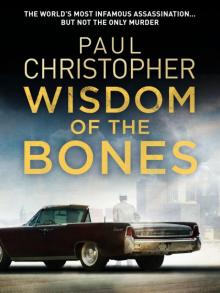 Wisdom of the Bones
Wisdom of the Bones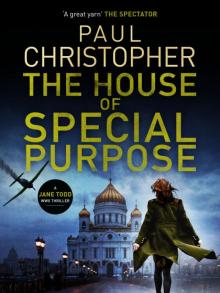 The House of Special Purpose
The House of Special Purpose The Second Assassin
The Second Assassin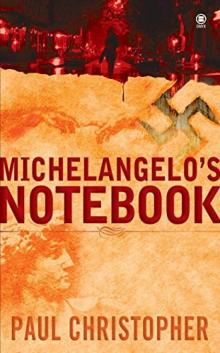 Michelangelo's Notebook
Michelangelo's Notebook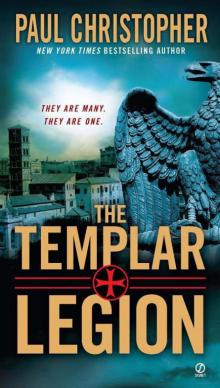 Templar Legion
Templar Legion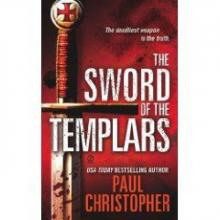 The Sword of the Templars t-1
The Sword of the Templars t-1 Red Templar
Red Templar The Aztec Heresy
The Aztec Heresy The Templar Legion
The Templar Legion Rembrandt's Ghost
Rembrandt's Ghost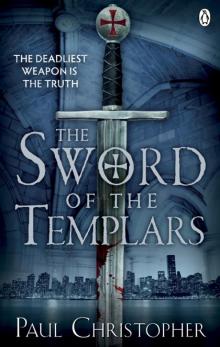 Sword of the Templars
Sword of the Templars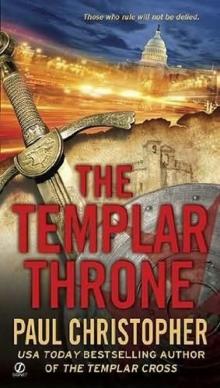 The Templar throne t-3
The Templar throne t-3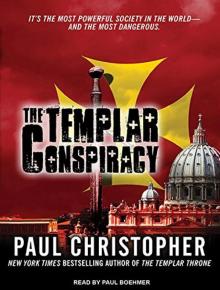 The Templar Conspiracy
The Templar Conspiracy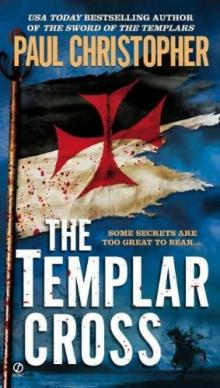 The Templar Cross t-2
The Templar Cross t-2 The Templar Legion t-5
The Templar Legion t-5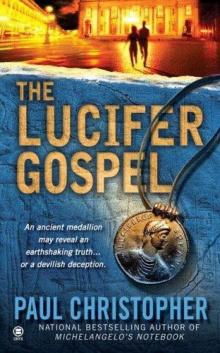 The Lucifer Gospel
The Lucifer Gospel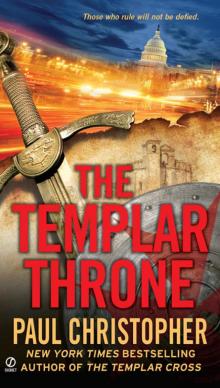 Templar Throne
Templar Throne Michelangelo_s Notebook fr-1
Michelangelo_s Notebook fr-1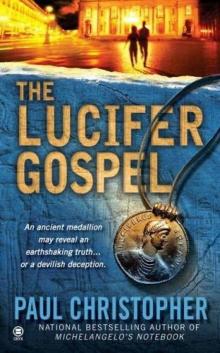 The Lucifer Gospel fr-2
The Lucifer Gospel fr-2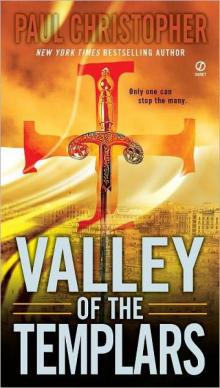 Valley of the Templars ts-7
Valley of the Templars ts-7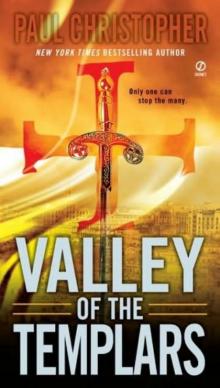 Valley of the Templars
Valley of the Templars Templar Cross
Templar Cross The Templar Throne
The Templar Throne The Templar Cross
The Templar Cross Lost City of the Templars
Lost City of the Templars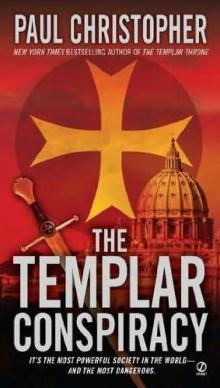 The Templar conspiracy t-4
The Templar conspiracy t-4 Templar Conspiracy
Templar Conspiracy